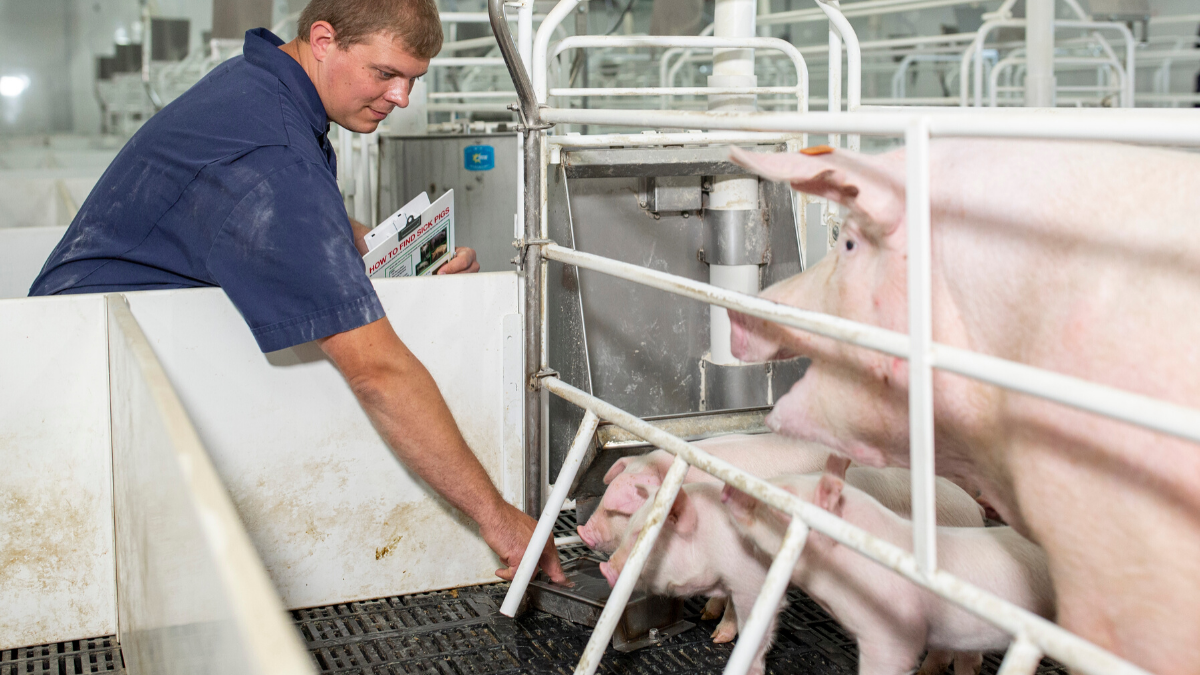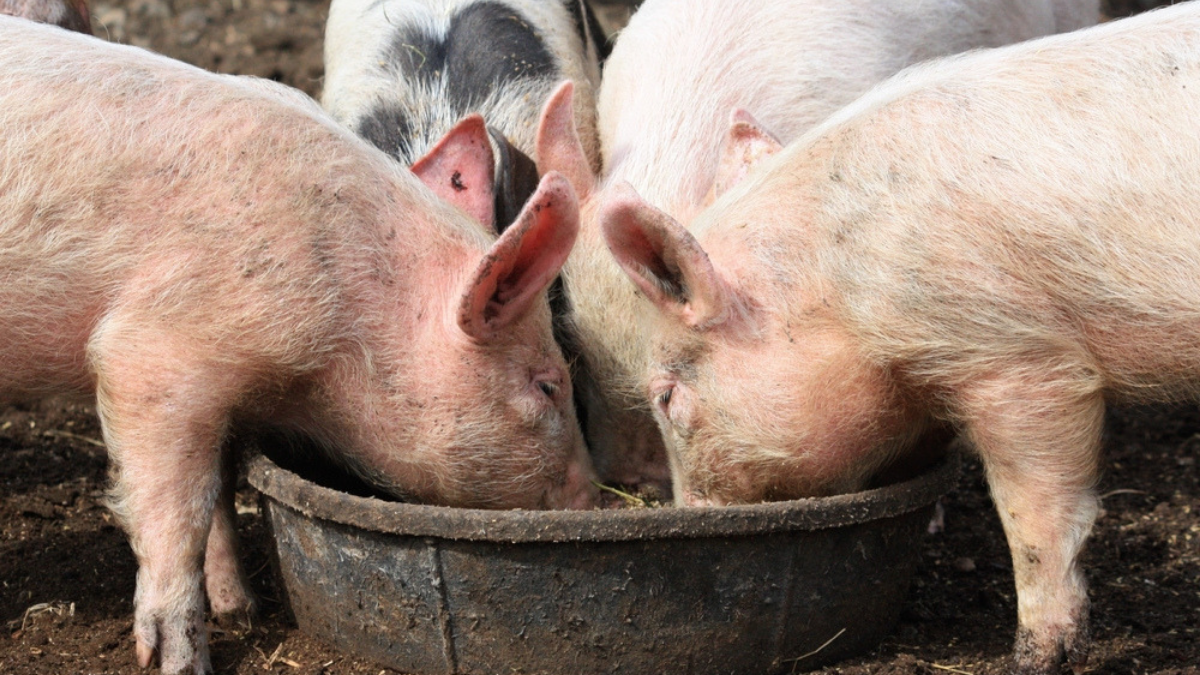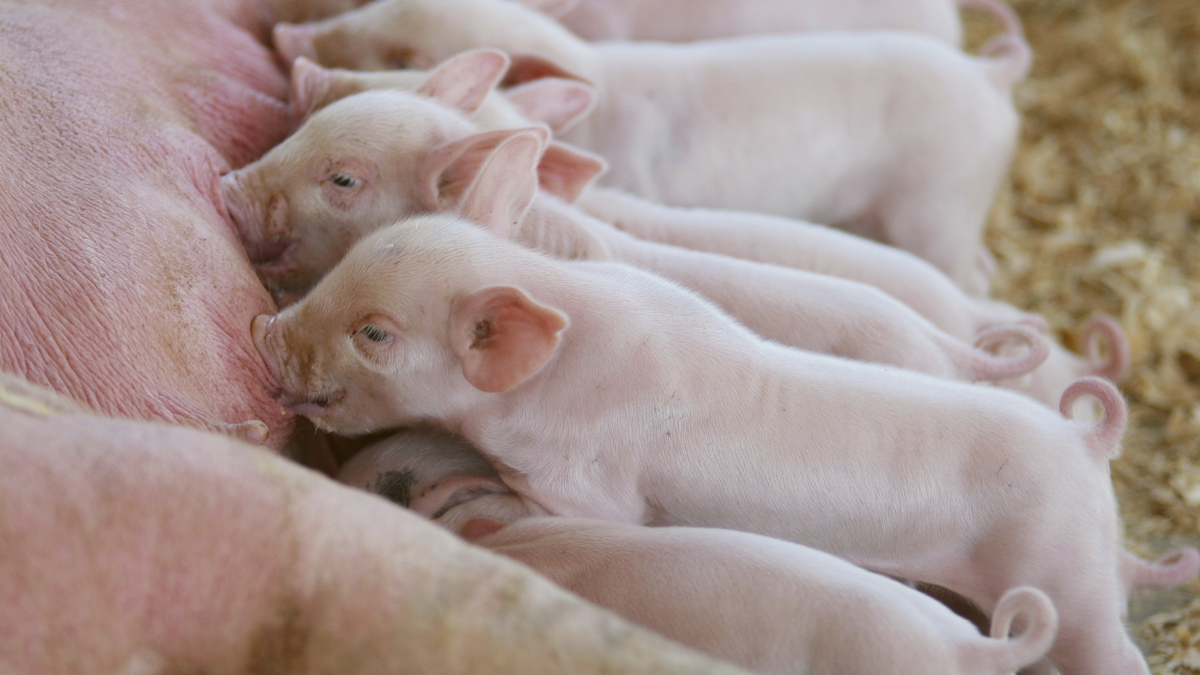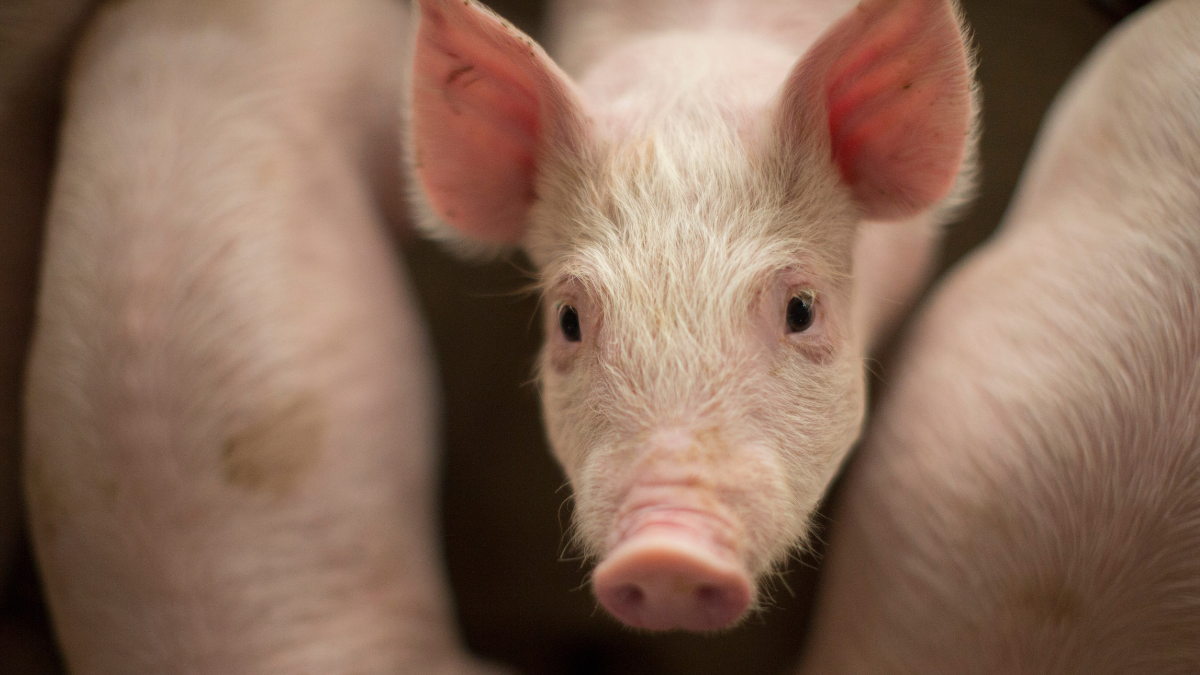As climate change becomes a larger issue, reducing greenhouse gas emissions and finding ways to sequester carbon in farm and food production is more important than ever. Robynne Anderson discusses her experience providing businesses with sustainable solutions as president of Emerging Ag, the international consulting firm for agriculture.
The following is an edited transcript of David Butler’s interview with Robynne Anderson. Click below to hear the full audio.
David: Hi, Robynne. How are you today?
Robynne: Great to see you, David.
David: Thanks! Tell us a little bit about Emerging Ag and what you do.
Robynne: Well, it's a company that’s spread out around the globe. There are 22 of us on the team, and we work on agricultural policy, really, at a global level. So, whether that means working with agricultural trade associations or individual companies or farmer groups or agricultural scientists, we try and make sure the voice of agriculture gets heard in the context of the United Nations and other venues where people are talking about how you set agricultural policy.
David: Okay. That sounds pretty exciting, and you must be doing a pretty good job, because I know that you are in the Canadian Agricultural Hall of Fame.
Robynne: Oh, thank you. Yes, it was a great honor. Yes, my life is very exciting for a girl who grew up in a small town in Dugald, Manitoba, on a farm. I did not expect to get to see so much of the world, and I find that agriculture is just a great unifying part of a lens with which to see the world because, when you get out on to farms, whether it's in Africa or Asia or any other part of the world, there is something about farming that might be done differently. They might be growing different crops, but there's something about the reality of being from a farm that's kind of the same. It's practical. The weather is still a big factor. It's hard work, and those communities are very welcoming.
David: Yeah. You mentioned that weather is a big factor, and of course, that's always been true for farming. There are all sorts of uncertainties around the weather and lots of different variables, which make it very challenging, and it seems like, more and more, that's an even bigger problem, with extreme weather events around the globe. What are you seeing that's a serious challenge for farmers?
Robynne: Well, weather has undoubtedly, as you said, always been one of the toughest parts of farming, and it always seems that the rain never comes when you need it or comes too much. That's been the case in our farm a bit lately, but everybody feels this change from the norm. There used to be patterns; it was always variable, but now, even the sense of the way the seasons work, it really does seem to be changing quite a bit.
I was in Kenya for much of the month of March, and their rain season would normally have started about mid-March. I left at the end of the month, and it still had not started. The rains have started to come now, but weeks behind schedule. Really, you get that sense — and for us on our farm in Canada, you see more and more flooding pressure, year on year on year. It's no longer just once every 40 or 50 years that you're feeling that the Red River is going to swallow you up. It's a changing world, and I think this is what is giving extra credence to a discussion that scientists started many years ago, saying something is afoot. We are having too big an impact on our environment.
David: Yeah, and that certainly seems to be true. Because extreme weather and climate change are becoming a bigger and bigger issue, it's very important to look at what we can do to mitigate our greenhouse gas emissions in every industry, not just agriculture, and you spent some time looking at that. So, what do you see that's promising? What are some opportunities we have to do that?
Robynne: Well, here at Alltech, there was an awesome panel, and I was really lucky to be on it with a set of others who were working on all very different aspects of that. Part of what I was talking about specifically is that anything that we do in our businesses, we need to measure. We would never go into a sales program and not know what our target was and what our sales figure was and what our cost of delivering that product would be. We wouldn't be in business otherwise.
The same applies, really, if we want to take climate change seriously. That means looking at how we are measuring inside our individual businesses. One of the gentlemen on the panel was talking about actually pricing in carbon into their business planning and in terms of their internal budgeting, but what I was talking about also is the need for the sector as a whole to be engaged in measurement. I use a particular example of the Global Dairy Platform, which has helped to set up the Dairy Sustainability Framework. Now, about 30% of the milk sector, total volume of milk, is actually reporting in through this framework, so that's a really big jump forward, and it's not just about climate change.
Climate change is incredibly important, but if we're only looking at it from an agricultural perspective on greenhouse gas emissions, I think we're missing the range of things that we need to be involved in, and that includes looking at water and are we drawing down too much or are we polluting it on the way out. These are very concrete, measurable things, and by reporting in together, we can begin to understand what's happening and actually have a conversation about what needs to be done.
One thing that we saw that really surprised a lot of people is that the assumption is that greenhouse gas emissions are highest from dairy production in the developed world — an idea that large, intensive farms would be naturally more polluting — but, in fact, the efficiency of those productions shows that OECD countries have been consistently dropping their greenhouse gas emission rates, and they're really quite low. They're not down to zero, but they're really quite low, whereas in developing countries, where animals may go a dry season without being able to be fully productive, all of the emissions-related intensities are actually much higher, because they don’t have that production efficiency.
That's really important to understand, but I think it's also very true that, if you consider the emission discussion, it's great that dairy is down 11% in the past ten years in terms of how much carbon we're releasing for every liter of milk we produce, but if you consider that the world still continues to need a total reduction in carbon, you have to be looking, in agriculture, to make use of agriculture's great asset, because agriculture can also do carbon sinks. That is what we do, right? We grow stuff. We put carbon into the soil. We take carbon out of the air for those plants. The opportunity really does exist for all of us to be looking at a net-zero emission intensity, or below, because if we do the right things on our farms, we can get to that level so that we can grow the amount of milk we're producing that's needed in the world but do it in a way that isn't actually helping to destroy the world through releasing too much greenhouse gas.
David: Yeah. That opportunity that agriculture has is very exciting. Can you talk a little bit about some of the practices that can help sequester carbon?
Robynne: Absolutely. If you're thinking about a farm as having a land footprint, what kind of things are you growing on that land? Farmers can do concrete things, like plant more trees. A lot of farms actually already have trees around their houses to help protect them from weather, ironically, so what are you doing to put long-term crops? If you're looking at the livestock sector, pasture is a great carbon sink — you managing that pasture well and protecting it. Also, if you think about the dairy sector, for instance, anaerobic digestion, manure management and sequestering that into a facility where you are actually producing renewable energy is an incredibly powerful part of reducing the greenhouse gas footprint of your farm.
Farms actually have a lot of lands, so whether your dairy barns have solar energy panels on the top of them; you're using, perhaps, manure management; maybe you're taking local food waste products and putting them in with your manure manager to further that energy production; you can look at a wind turbine on your farm — but farms really can get energy, neutral or renewable energy, sourced. Even some farms are now moving to actually put onto the grid renewable energy, which gives it a double whammy, and that's how you can get to that negative footprint level. There's just such an incredible opportunity of managing well, of using conservation tillage, of really thinking about how you are engineering that system.
The great thing is, at the promised end of that is actually the potential to earn some money from that energy you're putting back into the grid, especially if you're working in collaboration with others. There's an opportunity for it not only to be the right thing to do, but to be a really good business decision.
David: Yeah. When you're talking about earning money, you're talking about selling carbon credits to other businesses?
Robynne: That is an opportunity, but I am thinking, actually, about putting electricity back onto a grid. You get paid for the electricity you generate, so that's a clearer path to a business.
David: Okay. I suppose electricity and energy use in general is kind of a small percentage of the carbon footprint from the farm, but a farm has the potential to generate much more electricity than that and offset nearby homes or businesses and balance the equation, right?
Robynne: Exactly. Whether you're making a compressed natural gas or a conventional electricity product, that is exactly the opportunity that farms have this resource available to them, because they have a land footprint. Now, you need to work collaboratively with your local electricity grid to be part of the renewable sources there. Some farms are working quite well together to achieve that. You see some of the cooperatives, for instance, in the dairy sector working together to get their members having a bulk-buy onto the grid, because getting access onto that grid is the challenge, but energy is actually quite a high input cost in a lot of farms. So, even if you got your electricity cost down in your own operation, that would be a big benefit, and then, to produce a surplus that you could actually use as a revenue stream is just one example of how you can really get to zero, because everybody says that's impossible, but farms really have this unique opportunity — and especially how they manage their carbon sinks on their farms, as well.
David: It would be fantastic if many more farms were at zero greenhouse gas emissions, because there's so much negative publicity about the amount of greenhouse gasses that are produced on farms. You mentioned a little earlier that it's very important to look at data. You had an example yesterday that shows it's important to look at the data in multiple ways, when you were talking about the carbon output of New Zealand, Ireland, and the different ways you can look at that.
Robynne: It is a strangely quirky thing that, when you look at a chart about greenhouse gas outputs, New Zealand and Ireland pop higher than countries like China and some other places that you would expect would have much higher greenhouse gas emission implications.
David: And you're saying from the dairy sector specifically, right?
Robynne: That is the calculation — is because both of them are very effective dairy producers — that this is counting very high in what the proportion of their greenhouse gas emissions are. Does that mean that two countries that have a very moderate climate, perfectly adapted to dairying, that have beautiful grasslands, that are easily maintained through natural rainfall, aren't the best place to produce milk? Really, what's counting against them is they are such a good producer that they are exporting milk and serving the rest of the world, but because that production happens in their country, they carry 100% of those emissions, but if you went off and set up a dairy — and I'm going to pick an arbitrary country here — in Amman or in the middle of a desert somewhere, it is not going to be, probably, a more greenhouse gas-efficient or more environmentally sustainable solution because it's happening in that other country, because you're going to have to irrigate that land. You're not going to have the same natural cycles. You might, potentially, have to provide cooling to those dairy cows to be productive, because they're not used to that kind of heat.
The result will be, actually, potentially, a bad outcome if we don’t find ways to recognize where we produce things efficiently. The current discussions about climate change actually really hone in on a country's responsibility for what they're producing, and that makes a certain amount of sense, but when you're talking about global trade — especially in food — it's really important that we also find a way to make the right decisions globally, that we're not turning over lands that are inappropriate for some things and making them into lands that are, therefore, being used. Because, as a Canadian farmer, I don’t think we're going to be growing mangoes in Canada. We will have gone a long way down the climate change path if, suddenly, banana trees and tropical plants or mangoes are growing in the middle of Canada. We grow some other things really, really effectively, and I think you can see that paradigm potentially going in the wrong direction.
If I might just add one more thing to that, it's really important to consider that, as we're having more extreme weather, that trade becomes even more important. You just don’t know what's going to hit where, who's going to have a drought and who's going to have a cyclone and who's going to have a flood.
One of the things that the FAO produced recently was to talk about just how important global trade is going to be in food. It's always been important, but it becomes our backup system to food security, and so, it is really important that we think about how to manage this in a way that the trade is actually encouraged and that the best, most ecologically sound producers are being encouraged to use it.
David: Yeah. I'm sure it's incredibly difficult to write global agreements or treaties on things like greenhouse gas emissions, and there's certainly a potential for some inadvertent mistakes. When you're looking at greenhouse gas emissions on an industry per-capita for a small country that excels in that industry, the number looks horrible, but if you look at it per liter or gallon of milk, it's a completely different picture, right? So how do we tell that message and make sure that those decisions are being made in a sensible way that makes good policy for everybody?
Robynne: Well, it is really challenging. I've had the opportunity to go to some of the UN climate change meetings or very large meetings. There's a lot on the agenda. It's a really complicated process. One thing they deserve a lot of credit for is that the climate change negotiations have really heard from NGOs and businesses and scientists alike, so it's a space where having a serious conversation is possible. As we've moved to getting serious about national emissions, the inequities of this position become more clear, and it is possible to then say, “Okay, now we understand that. In a way, we didn’t understand it before,” and the agricultural sector has to be doing those numbers, has to be doing those measurements, so you can explain that the efficiency level on this is very high.
There are some dairy farms in America that are getting to zero, so it's not impossible; it is actually really happening. You want to make sure that the discussions to advance our goals of cutting greenhouse gas emissions don’t create perverse subsidies for the wrong sorts of actions. For instance, strangely, if you were to till under all that pasture and grassland in New Zealand or Ireland, you might argue that once they went back to pastureland, they would get a carbon credit for creating a carbon sink, but they would've done something that actually caused more release of carbon so that they could get the credits for doing it. So, we really want to find ways to talk about agricultural production that have the practical voice of farmers there and don’t lead countries to make decisions to hit numbers that actually lead to the wrong outcomes.
It is a complex piece of work to navigate that, but we didn’t get to climate change without doing a lot of complex things, so it's going to take a fair amount of concerted effort to find a path forward.
David: Yeah, good point. There's certainly a lot of accounting and measurement that we need to do to make sure that we're mitigating climate change, but it's very important to get that right. If we think we're doing everything we need to and we're not making the right decisions, we're in a lot of trouble.
Robynne: We've just discussed the weather lately. I think we're in some trouble, and now, it is really about the path to get out, but you don’t want to make the path to get out worse. Like anyone finding their way out of a forest, we'll probably make a few wrong turns, but we want to at least be headed towards the edge of the forest, not going deeper in the other way.
David: Are there things going on right now in the industry to try to help reduce emissions for low- and middle-income countries that have, traditionally, low productivity?
Robynne: Some, but not remotely enough. It is a strange thing that agriculture receives very little of the global development budget. Only about 5% a year of all of the money that's going into development assistance goes into agriculture, even though 80% of the people living in multidimensional poverty — which means that they live below $1.25 a day — they don’t have access to schools. They don’t have access to hospitals. They live in rural areas, so they're farmers.
Eighty percent of the world's most needy are in a rural context, and yet, only 5% of development money going to agriculture is already wrongheaded, and then, on top of that, if you consider that, of that 5%, only 4% goes to livestock. We're talking about minute amounts of the development budgets going to important factors where they're needed, and many communities in these areas actually have a very strong livestock tradition.
So, it's really important that more gets done, but there are some things happening. There's the International Livestock Research Institute, which is based in Kenya but operates quite globally in the developing country context. I have the good fortune to work with them on a number of things, but there are some really innovative things that they've been part of the leadership on. One of them is Indexed Livestock Insurance. If you're in a situation where there's a drought, there's extreme weather, rather than doing what we've traditionally done — which is to say, "Here's livestock insurance. We're going to wait until that animal dies," so your herd is wiped out and an entire community that might be based on that herd has had their lifestyle devastated; they're perhaps nomadic, they're in a situation that they have completely destabilized the population — instead of taking a look at overall weather trends, seeing that clearly there is a drought. The Indexed Livestock Insurance actually is meant to buy feed for those animals so that they are in a position to make sure that those animals don’t die. So, rather than waiting until a terrible outcome and suggesting that you can just buy back your loved one — if you were to use a hospital analogy right, you don’t treat them at all while they're starving to death, but afterwards, you give a big payout for their death — you should do the opposite. You should get that assistance in.
It's a really simple, concrete thing that, if you're in agriculture, of course you should send in feed, but we've really struggled to get that kind of practical agricultural lens onto a lot of the interventions.
David: That's a really good analogy. It needs to be more like health insurance and less like car insurance, right?
Robynne: Yes.
David: All right. Well, thank you so much for your time today, Robynne. It was great talking to you.
Robynne: Pleasure.
Robynne Anderson spoke at ONE: The Alltech Ideas Conference. Sign up to hear other presentations from ONE19.




























